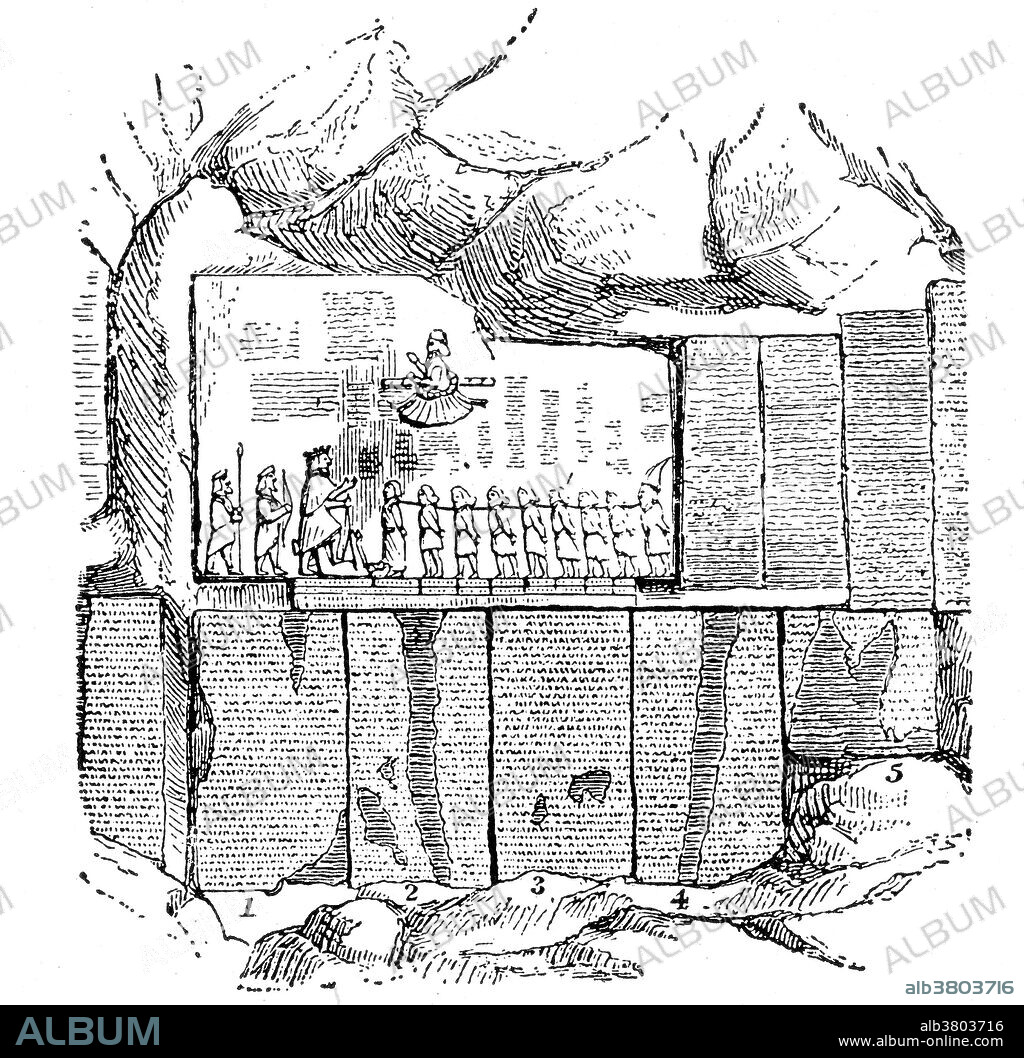alb3803716
Darius the Great, Behistun Inscription

|
Zu einem anderen Lightbox hinzufügen |
|
Zu einem anderen Lightbox hinzufügen |



Haben Sie bereits ein Konto? Anmelden
Sie haben kein Konto? Registrieren
Dieses Bild kaufen.
Nutzung auswählen:

Titel:
Darius the Great, Behistun Inscription
Untertitel:
Siehe automatische Übersetzung
The Behistun Inscription is a multilingual inscription and large rock relief on a cliff at Mount Behistun in the Kermanshah Province of Iran, near the city of Kermanshah in western Iran. Authored by Darius the Great sometime between 522 BC and 486 BC, the inscription begins with a brief autobiography of Darius, including his ancestry and lineage. Later in the inscription, Darius provides a lengthy sequence of events following the deaths of Cyrus the Great and Cambyses II in which he fought nineteen battles in a period of one year to put down multiple rebellions throughout the Persian Empire. Darius the Great proclaimed himself victorious in all battles during the period of upheaval, attributing his success to the "grace of Ahura Mazda". The inscription includes three versions of the same text, written in three different cuneiform script languages: Old Persian, Elamite, and Babylonian. The inscription is to cuneiform what the Rosetta Stone is to Egyptian hieroglyphs: the document most crucial in the decipherment of a previously lost script.
Persönlichkeiten:
Bildnachweis:
Album / Science Source
Freigaben (Releases):
Bildgröße:
3738 x 3668 px | 39.2 MB
Druckgröße:
31.6 x 31.1 cm | 12.5 x 12.2 in (300 dpi)
Schlüsselwörter:
ASSUR • BERÜHMT • BERÜHMTE PERSÖNLICHKEIT • BESCHRIFTUNG • ÉLAMITE • KEILSCHRIFT • KOMMUNIKATION • MESOPOTAMIAN • MYTHEN: PERSISCH • NOTABEL • ORIENTE MEDIO • PERSISCH • PERSISCHE MYTHEN • PERSISCHE • PROMINENZ


 Pinterest
Pinterest Twitter
Twitter Facebook
Facebook Link kopieren
Link kopieren Email
Email
